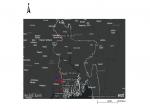Introduction
One of the cornerstones of India’s strategy has been to develop India economically and technologically. Another facet of India’s policy has been to seek partnerships on the strategic, economic and technological fronts to widen its policy and development options in order to safeguard its interests. The strategy adopted to meet these policy objectives is to restore our traditional links and integrate India with its immediate and extended neighborhood besides responding positively to the imperatives of globalization. This translates into an Indian vision of being well connected to Afghanistan, Iran and Central Asian Region and beyond on the western flank and to Bangladesh, Myanmar, Thailand and beyond on the eastern flank through a network of multi-modal transport corridors.
These networks would facilitate trade, exchange of energy through oil and gas pipelines, promotion of tourism and increase of communication links leading to what can be termed as a zone of co-prosperity. Towards this end, a number of regional and sub regional initiatives have been undertaken by India to improve connectivity, promote economic and technical cooperation, enhance people to people relations and usher in peace and prosperity.
Therefore, India is involved in a number of regional and sub-regional initiatives and frameworks. BCIM (Bangladesh, China, India and Myanmar) framework is one such initiative which has recently been given a push both by India and China.
However, there are also other groupings like Bay of Bengal Initiative for Multi-Sectoral Technical and Economic Cooperation (BIMSTEC) which is one such initiative for sub regional integration. Further, India also has a Trilateral Dialogue with Myanmar and Thailand addressing the same issues. There is also a Ganga –Mekong Initiative to link countries of Mekong Basin (Myanmar, Thailand, Cambodia, Laos and Vietnam) with India. All these are in addition to the major regional organisation in South East Asia i.e. ASEAN.
Similarly, China has also been involved in a number of regional groupings i.e Greater Mekong Sub-region initiative that was founded in Yunnan in 1992.
Even though there is an overlap in goals and objectives of a number of regional and sub regional groupings, there is a need to critically analyze whether multitude of such cooperative efforts are beneficial or otherwise.
BCIM Evolution
So far as the BCIM forum is concerned, it has been in works for over a decade now (since 1999). In fact, it was a Track II platform, known earlier as Kunming Initiative, which was formed for sub-regional cooperation revolving around trade, commerce and connectivity.
It was considered as a provincial initiative and did not have much resonance among at least the policy makers and the MEA officials. Some of the earlier meetings that were attended, for instance, by India’s Secretary (East), Mr. Rajiv Sikri in 2006 questioned its utility when several other similar initiatives existed in the region. On the other hand, later in 2011, a Kolkata-Kunming car Rally that was expected to encourage the concept of BCIM found official mention in the Joint Statement between China and India.
However, it was only last year that the BCIM grouping gained some traction when it was first mentioned in the Joint India-China communiqué during PM Li’s visit to India in May 2013 and it was again discussed between the two during PM Manmohan Singh’s visit to Beijing in October 2013. Thus, it became a Track I initiative with the prospects of the objectives of BCIM being realized.
As a follow up of Heads of State meetings, a Joint Study Group (JSG) of BCIM to chart out the modalities for achieving the goals of BCIM economic corridor was set up and it held its first meeting at Kunming in December, 2013. JSG has outlined a number of steps to be taken to convert the concept into a reality. A Joint Working Group was also proposed to be established for improving the working mechanism. The Final Report is expected to be submitted by end September and by end December 2014, it is expected to be adopted and signed for inter-governmental cooperation. Cooperative areas between the four members would include:-
(a) Physical Connectivity
(b) Trade in goods, services and investment including finance
(c) Environmentally sustainable development
(d) People to people contacts
Assessment
However, the question remains as to whether this sub regional grouping would make some headway in the coming years and what are Indian perceptions on the issue. What are its future prospects?
Even while the top leadership has come to an understanding that BCIM has plenty of potential and it needs to be encouraged, there are several difficulties and problems in imparting a degree of substance to achieving the objectives of the forum.
Security environment is one major negative factor inhibiting the successful realization of the forum.
For instance, in February, the influential English language Chinese daily, Global Times commenting on the BCIM Economic Corridor pointed out that even though it has been put on fast track, the border areas are characterized by poverty, ethnic division and collision and rampant transnational crimes. It talks about difficulties of security and development taking place simultaneously. (Construction of rail and road networks, logistics centres, industrial parks and development of scenic areas etc). ‘Thorny security challenges have to be resolved- ethnic conflicts, drug & human trafficking along Sino-Myanmar borders’. This situation is present on all the borders shared by the four countries. Security first or development first or both simultaneously is not an easy question to be answered.
Conflicts between the armed ethnic groups and Myanmar have negative impact on creating conducive climate for investment and development. Sino-Myanmar border has a number of ethnic conflicts and issues which are well known. Transnational crime gangs in the Golden Triangle create many obstacles for bringing peace and stability and law and order in the area.
Similarly, on the Indo-Myanmar border, there are ethnic people who reside on both sides of the borders and some elements continue to remain hostile to either India or Myanmar or both. While Indian and Myanmar security forces have coordinated their patrolling and operations against such groups, peace and stability continues to be at risk in these areas.
Sino-Indian tensions along the border are well known and despite the fact that a new Border Development Cooperation Agreement has been signed, the incursions and misperceptions along the borders continue to take place.
Bangladesh and Myanmar borders have with the problem of Rohingyas crossing over to Bangladesh and the Myanmar government refusing to grant them citizenship rights. Thus, conditions for trade and commerce are not conducive.
The prevailing security situation thwarts the successful outcome of BCIM forum and work against building trust and mutual confidence. China and India, both major countries in the group, could take the initiative to improve mutual trust and confidence between the members of this forum.
Indian Approach
Even though India has agreed in principle for a BCIM Economic Corridor, it also has some apprehensions.
Firstly, there are still several insurgent and rebel groups in North East India which are involved in a host of anti national activities like gun running, drug trafficking; they are also being used by foreign intelligence agencies (e.g. Anthony Shimray incident where Chinese intelligence agencies were alleged to have been involved in fuelling insurgency by sending a huge consignment of Chinese arms to NSCN(IM) in the NE; there have also been reports of some Chinese intelligence agents being active there; ISI has also been involved in sending arms).
Secondly, Sino-Indian border problems are well known and therefore Indian sensitivities concerning the claims and possible insecurities on that account. Tirap district of Arunachal Pradesh is inhabited by Nagas and there is an insurgent activity there. Even though some funds for constructing Ledo/Stilwell Road have been earmarked, India is not in favour of reviving the old Burma/Stillwell Road linking India’s NE to Yunnan through Myanmar because of security reasons. This is despite the fact that enormous commercial benefits (especially with reduction of transportation costs) might accrue. There are apprehensions that this might give China advantage in case of a military conflict.
Thirdly, while there is a dire need to develop the North eastern states of India and China can provide the wherewithal for infrastructure development including the much needed funds, the Indian government remains reticent in involving China in ways that might be detrimental to Indian interests.
Further, during the visit of Japanese PM Shinzo Abe in January 2014, Japan has been invited to take part in the infrastructure development of NE States.
Fourthly, there is a growing trade imbalance between India and China and any free flow of trade and commerce through the envisioned economic corridor would only increase the trade imbalance against India as China has not been able to practically address India’s grievances on this issue in any meaningful way despite remonstrations by India to this effect during summits and other bilateral exchanges.
Additionally, India has several bilateral and multilateral initiatives with the regional countries to address precisely the same issues. For instance, India has Bay of Bengal Initiative for Multi Sectoral Technical and Economic Cooperation (BIMSTEC), Mekong Ganga Cooperation initiative and Trilateral between India, Myanmar and Thailand for improving connectivity; all such initiatives involve either cooperation with Bangladesh or Myanmar or both that have similar objectives to that of BICM.
There is an overlap in goals and objectives of a number of regional and sub regional groupings that remain an important sub set of India’s ‘Look East Policy’ set in motion in the mid 1990s. That is why India had not been very keen to add another sub-regional grouping to its kitty where, possibly, the central role of India in some of these platforms could be undermined. There have also been talks of merging or combining of BCIM and BIMSTEC but regional geo-political environment does not appear to be conducive for acceptance of such proposals.
Conclusion
Though, in the recent conversation between Prime Minister Narendra Modi and Premier Li Keqiang on 29th May, the Chinese leader pushed for realization of BCIM yet it would not be easy to realize the objectives of BCIM Economic corridor or a Southern Silk Road in the short term to mid-term period. While it may be possible to address the security challenges along the borders and there are some signs of improvement along Indo-Myanmar and Indo-Bangladesh borders yet, for some progress to be made, there has to be a fundamental change in the nature of Sino-Indian relationship.
However, the way forward could be to start small joint projects in secure areas along the envisaged economic corridor which benefit the local population and which are not based purely on profit motive. Such joint projects could be initiated in Myanmar and Bangladesh by combined efforts of India and China. This would contribute to confidence building and possibly the goals of BCIM could be realized to some extent in the mid-term period.
Otherwise, except for hosting some Kolkata to Kunming car rallies and some other peripheral activities, it would be difficult to exploit the full potential of the grouping.
Substantive issues of BCIM would only receive attention when the geo-politics between both nations move towards a positive resonance. While specific programmes of BCIM Corridor may be discussed as part of keeping some positive atmospherics alive because of the confabulations at the top level yet implementation of the programmes would take their own time.
(The following is an updated version of the presentation made at Institute of South East Asia Studies during an international conference held at Yunnan University, Kunming, PRC).
Published Date: 2nd June 2014, Image source: http://voiceof.india.com










Post new comment